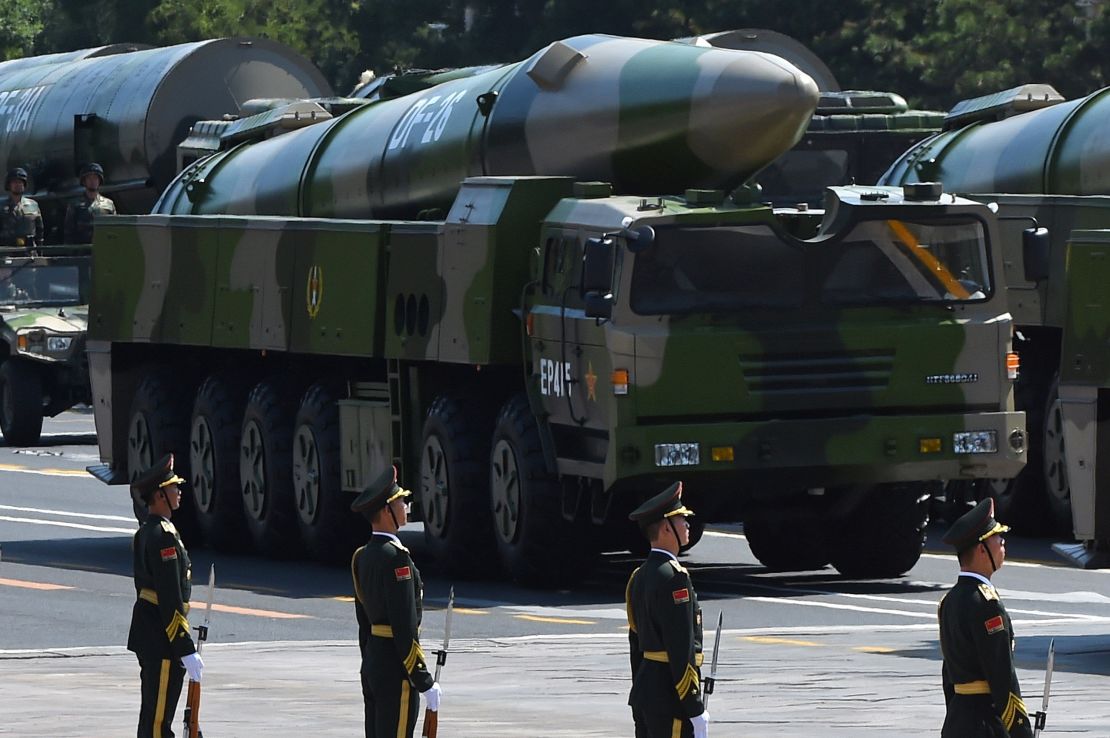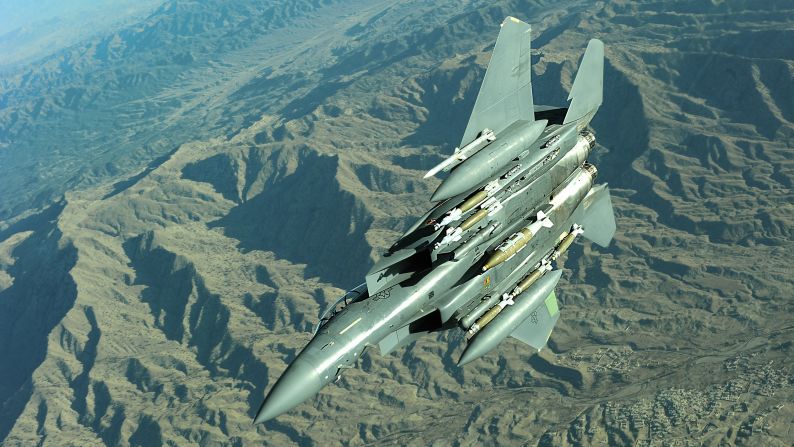Story highlights
U.S. bases in Guam are within range of new missile
Threat to Guam could embolden China elsewhere in Pacific
Capable of hitting targets 3,400 miles away, China’s “Guam killer” missile is raising new fears of a growing Chinese threat to major U.S. military installations and stability in the Pacific Rim.
A congressional panel has issued a report warning of the dangers of the missile, during a week in which U.S.-China tensions flared anew with a U.S. Navy destroyer sailing close to a Chinese-claimed island in the South China Sea.
The U.S.-China Economic and Security Review Commission said this week that China’s DF-26 intermediate-range ballistic missile – dubbed by analysts the “Guam killer” and unveiled at a military parade in Beijing last September – allows China to bring unprecedented firepower to bear on the U.S. territory of Guam. The territory sits well within the missile’s range.
“Foremost among China’s military assets capable of reaching Guam, the DF-26 IRBM represents the culmination of decades of advancements to China’s conventional ballistic missile forces,” the commission’s report says.
In the U.S. Air Force fleet
While the current state of Chinese guidance technology makes any threat low at the moment, the report noted that “China’s commitment to continuing to modernize its strike capabilities indicates the risk will likely grow going forward.”
The U.S.-China Economic and Security Review Commission was established by Congress in 2000 to look at issues between the two Pacific powers. It is required to submit an annual report to Congress on U.S.-China relations and advise Congress on possible legislative and administration actions.
Guam, home to Andersen Air Force Base and Apra Naval Base, has been as a place from where the U.S. could project power across the Pacific while having its forces at relatively safe distance from possible threats, including North Korea and China.
A report from the RAND Corporation think tank prepared before the Chinese military parade last year called Andersen the “only U.S. base in the Western Pacific not currently threatened by conventional ballistic missiles.”

And a study last year from MissileThreat.com at the George C. Marshall Institute in Washington warned, “Prior to the deployment of the DF-26, China’s only way to attack Guam would have been with H-6K strategic bombers, which would have been much less effective given the strong defensive capabilities of the U.S. military on the base.”
About 6,000 U.S. military personnel are based on Guam. The U.S. Air Force has sent regular rotations of B-1, B-2 and B-52 bombers as well as top-line fighter aircraft to Andersen. The U.S. Navy has four attack submarines homeported in Apra and can use the base as a resupply point for other warships.
Guam sits 2,500 miles from Beijing, which puts it about 700 miles beyond the range of China’s land-based medium-range missiles. But intermediate-range missiles such as the DF-26 have a range of up to 3,400 miles, according to the Pentagon, putting Guam within striking distance.
RAND warned that a Chinese missile strike of 100 IRBMs like the DF-26 could close Andersen Air Force Base to large planes for 11 days. And that’s where the threat to Pacific Rim stability – from flashpoints such as disputed islands in the South China Sea – comes in.
“China’s leaders could be more willing to resort to military force in such a crisis if they believed they could successfully neutralize Guam,” the congressional commission’s report says, because the territory would be a key point of reinforcement for U.S. forces operating farther to the west.
The panel’s report points out that China showed off only 16 DF-26 launchers at last September’s parade. “But inclusion in the September 2015 parade indicates it has likely been deployed as an operational weapon,” the report said.
The findings came out Tuesday, the same day the U.S. Navy sent a guided missile destroyer within 12 miles of a disputed island in the South China Sea where China has built an airstrip.
China responded by scrambling fighter jets and dispatching warships to “expel” the American ship from the area around Fiery Cross Reef, part of the Spratly Islands claimed by China, Taiwan, the Philippines and Vietnam.
In January, China said it had completed building a runway on the island, one of three it has been constructing in the South China Sea with dredged material.
Tuesday’s passage of the guided missile destroyer USS William P. Lawrence was the third that the U.S. Navy has conducted in the South China Sea.
Last October, the guided missile destroyer USS Lassen passed within 12 miles of Subi Reef in the Spratly Islands. And in January, the guided missile destroyer USS Curtis Wilbur sailed within 12 miles of Triton Island in the disputed Paracel Islands archipelago.
The transits, which the U.S. says assert rights granted under the International Law of the Sea, have stoked tensions between Washington and Beijing.
“The provocative actions of U.S. military ships and airplanes have exposed the U.S. motive of trying to destabilize the region and seek benefit from it. It also proves again the rationale and necessity of China’s construction of defense facilities on relevant islands and reefs,” Senior Col. Yang Yujun, spokesman for China’s Defense Ministry, said in a statement.
Washington says the U.S. plans further transits. “The United States will fly, sail, and operate wherever international law allows. That is true in the South China Sea as in other places around the globe,” a Pentagon statement said.















































